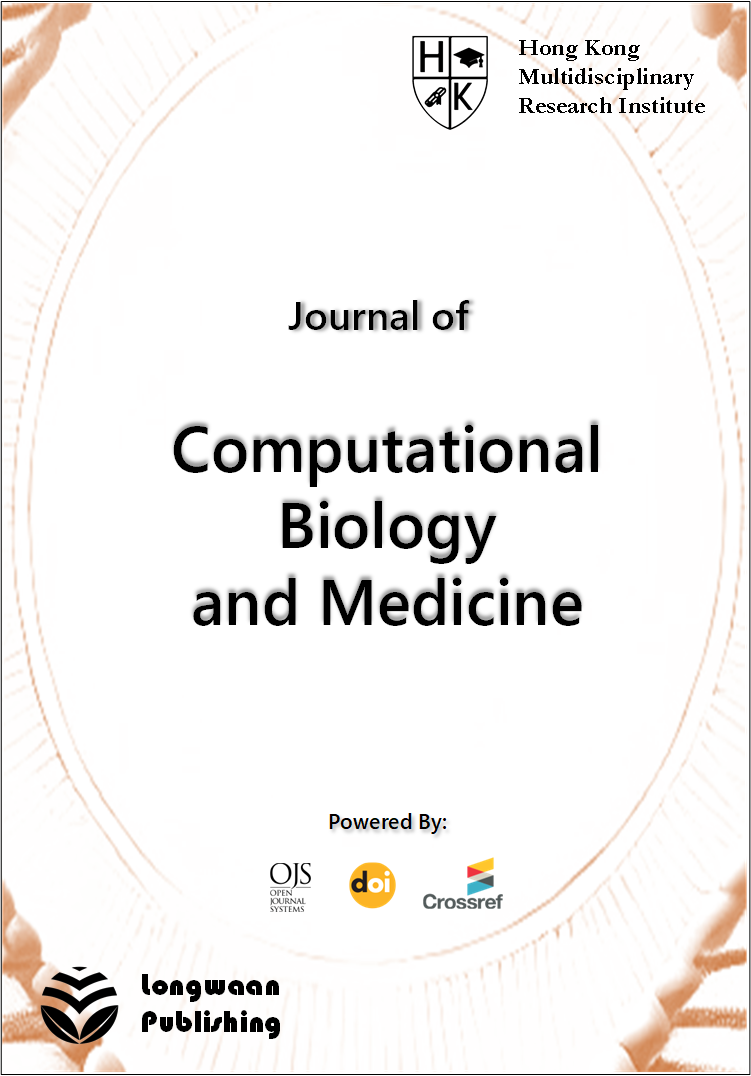Articles
Published 2025-02-06
Keywords
- Spatial Transcriptomics,
- Gene Expression,
- Data Analysis,
- Principal Component Analysis,
- Biological Research
How to Cite
Yamamoto, T., Suzuki, A., & Tanaka, Y. (2025). Spatial transcriptomics through Principal Component Analysis. Journal of Computational Biology and Medicine, 5(1). Retrieved from https://journal.mri-pub.com/index.php/JCBM/article/view/69
Abstract
Spatial transcriptomics, a cutting-edge technology that enables the high-resolution mapping of gene expression within tissues, is becoming increasingly popular in the field of biological research. The ability to visualize gene expression in its spatial context is essential for understanding complex biological processes. However, current research in spatial transcriptomics faces challenges such as large data volumes and the need for effective analytical methods. In this paper, we address these challenges by proposing a novel approach using Principal Component Analysis (PCA) to analyze spatial transcriptomic data. Our innovative method not only simplifies the analysis process but also provides valuable insights into the spatial relationships of gene expression patterns. This study contributes to advancing the field of spatial transcriptomics by presenting a more efficient and effective method for analyzing complex spatial gene expression data.References
- P. L. Ståhl et al., "Visualization and analysis of gene expression in tissue sections by spatial transcriptomics," Science, vol. 353, 2016, pp. 78-82.
- D. Zhang et al., "Inferring super-resolution tissue architecture by integrating spatial transcriptomics with histology," Nature Biotechnology, 2024, pp. 1-6.
- E. Denisenko et al., "Spatial transcriptomics reveals discrete tumour microenvironments and autocrine loops within ovarian cancer subclones," Nature Communications, vol. 15, 2024.
- W. Sun et al., "Spatial transcriptomics reveal neuron–astrocyte synergy in long-term memory," Nature, vol. 627, 2024, pp. 374-381.
- Y. Jin et al., "Advances in spatial transcriptomics and its applications in cancer research," Molecular Cancer, vol. 23, 2024.
- I. Jolliffe and J. Cadima, "Principal component analysis: a review and recent developments," Philosophical Transactions of the Royal Society A: Mathematical, Physical and Engineering Sciences, vol. 374, 2016.
- E. Candès et al., "Robust principal component analysis?," JACM, vol. abs/0912.3599, 2009.
- H. Yan and D. Shao, ‘Enhancing Transformer Training Efficiency with Dynamic Dropout’, Nov. 05, 2024, arXiv: arXiv:2411.03236. doi: 10.48550/arXiv.2411.03236.
- B. Moore, "Principal component analysis in linear systems: Controllability, observability, and model reduction," IEEE Transactions on Automatic Control, vol. 26, pp. 17-32, 1981.
- A. d'Aspremont et al., "Full regularization path for sparse principal component analysis," International Conference on Machine Learning, pp. 177-184, 2007.
- T. Metsalu and J. Vilo, "ClustVis: a web tool for visualizing clustering of multivariate data using Principal Component Analysis and heatmap," Nucleic Acids Research, vol. 43, pp. W566-W570, 2015.
- J. Shlens, "A Tutorial on Principal Component Analysis," arXiv.org, vol. abs/1404.1100, 2014.

